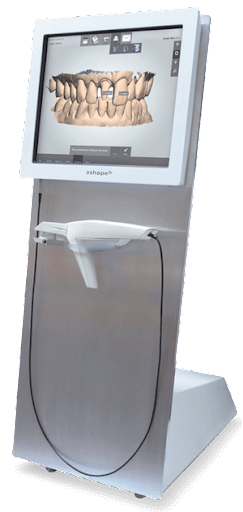When it comes to dental prosthetics, there are a variety of options available to patients who need to replace missing teeth or repair damaged ones. This ranges from Acrylic Full Denture, Acrylic Partials, to the Flexible partials which include the Valplast partial.
What is a Valplast Partial?
A Valplast partial is a type of removable partial denture that is made of a flexible nylon material. It is designed to be comfortable and easy to wear, while still providing the support and stability needed to replace missing teeth. Unlike traditional partial dentures, which are made of metal or acrylic, a Valplast partial is lightweight and less bulky, making it a more comfortable option for many patients. Wondering when a Valplast partial is a great choice for your patient?
This article highlights the factor to consider before considering Valplast partial as a great choice for your patient. Find out below.
When is a Valplast Partial a Great Choice?
- When Comfort Is A Priority
First and foremost, Valplast partials are a great choice for patients who are looking for a more comfortable, natural-looking alternative to traditional acrylic dentures. The flexible material used in Valplast partials allows for a more snug, secure fit in the patient’s mouth, which can reduce the risk of irritation or discomfort.
- When Dealing with Patients with Allergies or Sensitivities to Metal
Traditional partial dentures are often made of metal, which can cause discomfort or allergic reactions in some patients. A Valplast partial is made of a flexible nylon material that is hypoallergenic and won’t irritate sensitive gums or tissues.
- When the Patient Wants a More Natural Appearance
Valplast partials are available in a range of tooth shades to match the color of the patient’s natural teeth, they blend seamlessly with the patient’s natural teeth and gums, providing a more aesthetically pleasing result.
The flexible material also allows for a more natural-looking fit, as the partial can conform to the shape of the patient’s mouth more closely than a rigid metal or acrylic partial.,
- When the Patient Needs a Partial That is Easy to Wear
A Valplast partial is designed to be lightweight and flexible, making it more comfortable to wear than a traditional partial. It also has no metal clasps or hooks that can cause irritation or discomfort.
- When working with Patients with Gum Recession or Bone Loss
If a patient has experienced gum recession or bone loss in their jaw, a traditional partial denture may not fit properly or may cause discomfort. A Valplast partial, on the other hand, can be designed to fit the patient’s mouth more comfortably, even if there are areas of gum recession or bone loss.
- When the Patient needs a More Affordable Option
Compared to other types of dental restorations, a Valplast partial can be a more affordable option. Valplast partials are also a great choice for patients who are looking for a more affordable alternative to other types of dental prosthetics, such as dental implants or fixed bridges. The material and production process used to create Valplast partials are less expensive than those used to create traditional partials, and they are often covered by dental insurance. This can result in cost savings for patients.
Additionally, Valplast partials are durable. Unlike acrylic dentures, which can be brittle and prone to cracking or breaking, Valplast partials are made from a flexible, nylon-based material that is resistant to wear and tear. This means that Valplast partials can last longer than traditional dentures, which can save patients money in the long run.
- When the Patient Needs to Replace a Few Teeth
While Valplast partials can be a great choice for patients who are missing a few teeth, they may not be the best option for patients who have lost a significant number of teeth or who have severe bone loss in their jaws. Additionally, because they are made from a flexible material, Valplast partials may not be as strong or sturdy as other types of dental prosthetics, so it might not be the best option for a patient that requires strong or sturdy dentures.

